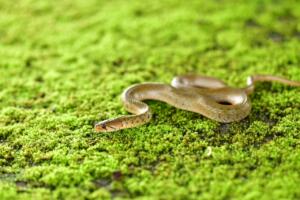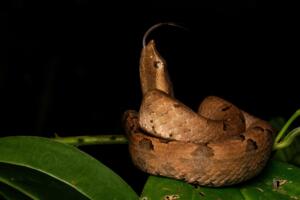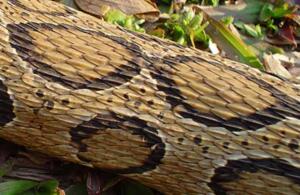World Snake Day is celebrated every July 16th to create awareness about snakes and their conservation. On this day, you are welcome to test your knowledge about snakes.
Top Scorer
Satvika N, Kochi
2nd Position
Siddharth Parab, Thane
Haritha M, Kannur
Mrinalkand Kiratkudave, Mumbai
Mark Steve, Mysore
Thanks for your responses. Please find answers below(in green)
-
Which snake among the following uses its body to kill?
- Python
- Viper
- Cobra
- Sea snakes
-
Which is not a venomous snake found in India
- Hook-nosed sea snake
- Checkered keelback
- Malabar pit viper
- Striped coral snake
-
Big four snakes are?
- Rock python, Reticulated python, Russel’s viper, King cobra
- King cobra, Russel’s viper, Spectacled cobra, Banded krait
- Common krait, Russel’s viper, Spectacled cobra, Saw-scaled viper
- King cobra, Spectacled cobra, Common krait, Russels viper
-
Which one is the large scaled pit viper?




-
Which snake is responsible for most human deaths in India due to snake bites?(Note: Answer got swapped between Russel’s viper and Saw-scaled viper, but this question may not have definite answer)
- King cobra
- Spectacled cobra
- Russels viper
- Saw-scaled viper
-
Snake administer their venom using?
- Fangs
- Tongue
- Tails
- Scales
-
The longest snake in the world
- Green anaconda
- Reticulated python
- King cobra
- Burmese python
-
How often do snakes shed their skin?
- Varies based on age
- Once a year
- Once a month
- Once in two years
-
Do snakes have external ears?
- Yes
- No
-
Spectacled cobra venom is
- Homotaxic
- Cytotoxic
- Neurotoxic
- Proteolytic
-
The bite of which of the following snake may have neurotoxic effects?
- Common krait
- Pit viper
- Rattlesnake
- Saw scaled viper
-
After a snake bite, if there are no symptoms of envenomation, such bites are called?
- Free bite
- Dry bite
- Slow bite
- Venomless bite
-
The primary use of snake venom?
- Self-defence
- Killing suspected enemies
- Immobilise and digest prey
- Protect young ones
-
Intense fear of snakes is called?
- Ophidiophobia
- Batrachophobia
- Elurophobia
- Zoophobia
-
Which of the following snakes give birth to young ones?
- Spectacled cobra
- Russels viper
- Common krait
- Wolf snake
-
Snakes extend their tongue often to
- Smell
- Listen to sounds
- Regulate temperature
- Attract prey
-
A snake has what type of eyelid?
- No eyelids
- Immovable eyelids
- Movable eyelids
- Eyelids are hidden in pouches
-
Which of the following is a myth about snakes
- Snakes like milk
- After a long time, snake venom may turn into a precious stone.
- Snakes take revenge
- All of the above
-
Snakes are
- Endothermic
- Exothermic
- Ectothermic
- Isothermic.
-
Pits of pit vipers are used for
- Sensing smell
- Sensing heat
- Sensing sound
- No special use
-
How can you tell if a snake is about to shed its skin?
- It will lick itself
- It will become extra active
- It will have bright red eyes
- It will have milky-coloured eyes
-
Where are Jacobson’s organs located in snakes
- Head
- Tail
- Genitals
- Not present in snakes
-
The biggest snake found in India.
- Burmese python
- Indian rock python
- Reticulated python
- King cobra
-
Which of the following is the highest protected snake in India?
- Python
- Cobra
- Viper
- Rat snake
-
As part of the evolution, snakes are most related to
- Frogs
- Lizards
- Eels
- Earthworms
-
The only snake to make a nest to lay eggs is
- King cobra
- Russels viper
- Reticulated python
- Indian rock python
-
Snake venom is produced by modifying.
- Parotid gland
- Sebaceous gland
- Lacrimal gland
- Pituitary gland
-
Teeth conducting venom in a snake are called
- Fang
- Tong
- Canines
- Incisors
-
A stumpy laterally compressed tail is characteristic of
- Vipers
- Sea snakes
- Cobras
- Pythons
-
Identify the snake

- Spectacled cobra
- Indian rock python
- Travancore wolf snake
- Russel’s viper
